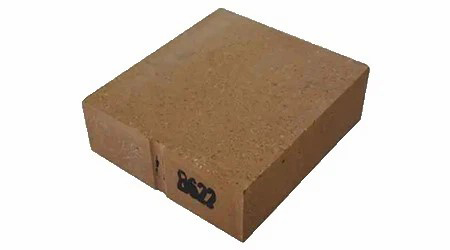PRODUCTS
Magnesia Iron Spinel Brick
Making Process of Magnesia Iron Spinel Bricks: The key raw materials magnesia and iron-spinel are carefully selected and processed to meet specific quality and purity requirements. The raw materials are thoroughly mixed to form a homogeneous mixture for use in forming bricks. Depending on the specific application and manufacturing process, the mixture is shaped into the desired brick shape using various techniques such as pressing, extrusion or casting. Features 1.High Temperature Resistance:They can withstand temperatures well above 1,700C (3,092F) without significant deformation or degradatio
Composition: Premium materials such as high alumina oxide, magnesium oxide, and silicon carbide, with customizable composition based on client requirements.
Form: Available in powder, brick, board, and castable forms to suit various application needs.
Refractoriness: Standard range from 1200°C to 1800°C, with options for higher temperature customization.
Application Fields: Widely used in industries such as steel, cement, glass, and petrochemicals for furnace lining and insulation.
Packaging: Options include 25 kg bags, bulk bags, and custom packaging solutions compliant with global transportation standards.
Introduction
Our experienced R&D team can customize the material, form, and size according to your specific application needs while ensuring compliance with international quality standards. With rigorous quality control and advanced production facilities, we guarantee products with high refractoriness, excellent compressive strength, and long-lasting durability. Whether you are in the steel, cement, glass, or petrochemical industry, we are your trusted partner, supporting the success of your projects.
For customization inquiries, please feel free to contact us. We will provide tailor-made solutions based on your requirements.
Magnesia Iron Spinel Brick Details
Making Process of Magnesia Iron Spinel Bricks: The key raw materials magnesia and iron-spinel are carefully selected and processed to meet specific quality and purity requirements. The raw materials are thoroughly mixed to form a homogeneous mixture for use in forming bricks. Depending on the specific application and manufacturing process, the mixture is shaped into the desired brick shape using various techniques such as pressing, extrusion or casting.
Features
1.High Temperature Resistance:They can withstand temperatures well above 1,700°C (3,092°F) without significant deformation or degradation.
2.Chemical Corrosion Resistance:They can withstand exposure to molten metals, corrosive slags, and various chemical compounds.
3. Their ability to maintain their structural integrity and refractory properties over extended periods of use reduces the frequency of replacements and maintenance.
Technical
| Brand & Properties | MH brick |
| Bulk Density (g/cm3) |
2.95 |
| Cold Crushing Strength (MPa) | 45 |
| Apparent Porosity(%) | 18 |
| Thermal Shock Resistance at 1,100℃ Water cooling | 8 |
| Refractoriness under Load (0.2MPa,T2℃) | 1680 |
Application
1.Steel industry:
- Ladle: They are used to arrange ladle used for transporting and pouring molten steel.
Electric arc Furnace (EAF) : magnesium-iron spinel bricks are used to line the walls and roofs of electric arc furnaces, which are essential for secondary steelmaking.
2.Cement industry:
- Rotary kilns: They are used in lined rotary kilns used in cement production, where the clinker manufacturing process requires high temperature resistance.
3.Glass manufacturing:
- Glass furnaces: magnesia spinel bricks are used to line glass furnaces.
- Heat accumulators: They are used in lining heat accumulators, which are components in glass furnaces that help control and optimize temperature.
4.Non-ferrous metal industry:
Copper and aluminum smelting: These bricks are used to line various equipment in the smelting process of non-ferrous metals.













